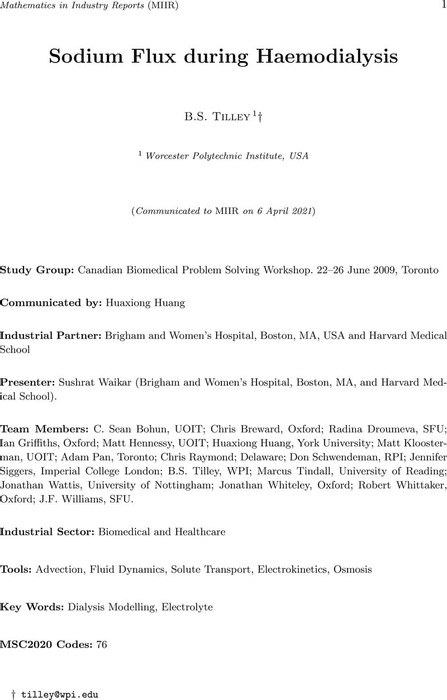Abstract
Dialysis removes charged ionic species in the blood that arise from complications in kidney disease. Although the process for the removal of urea and other unwanted charged species is understood, the effect of this removal on the net sodium concentration in the blood after treatment is unclear. In this report, we focus on formulating a fundamentally-based model to address this question. We consider the formulation near the membrane at the pore scale to determine effective jump conditions in ionic concentrations, electric potential and flow rate based on the membrane properties, and to determine whether electroneutrality holds within the pore. Secondly, we consider the local blood-cell concentration within one of the fibres and how this varies axially within the dialysis cartridge. Lastly, we consider a simple one-dimensional model of the charged species problem and conclude advection transport through the membrane is important for sodium transport, but less pertinent in cation species.
Content






